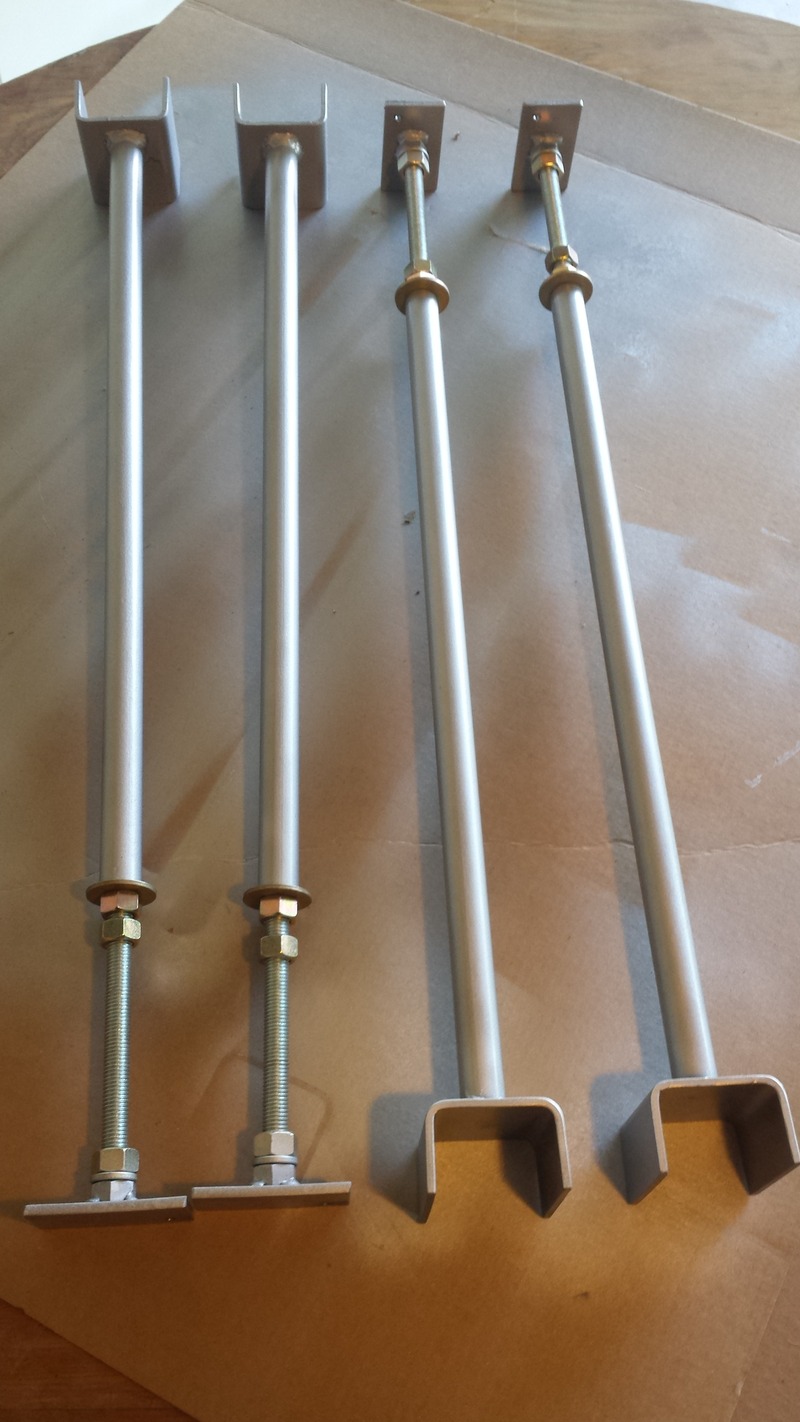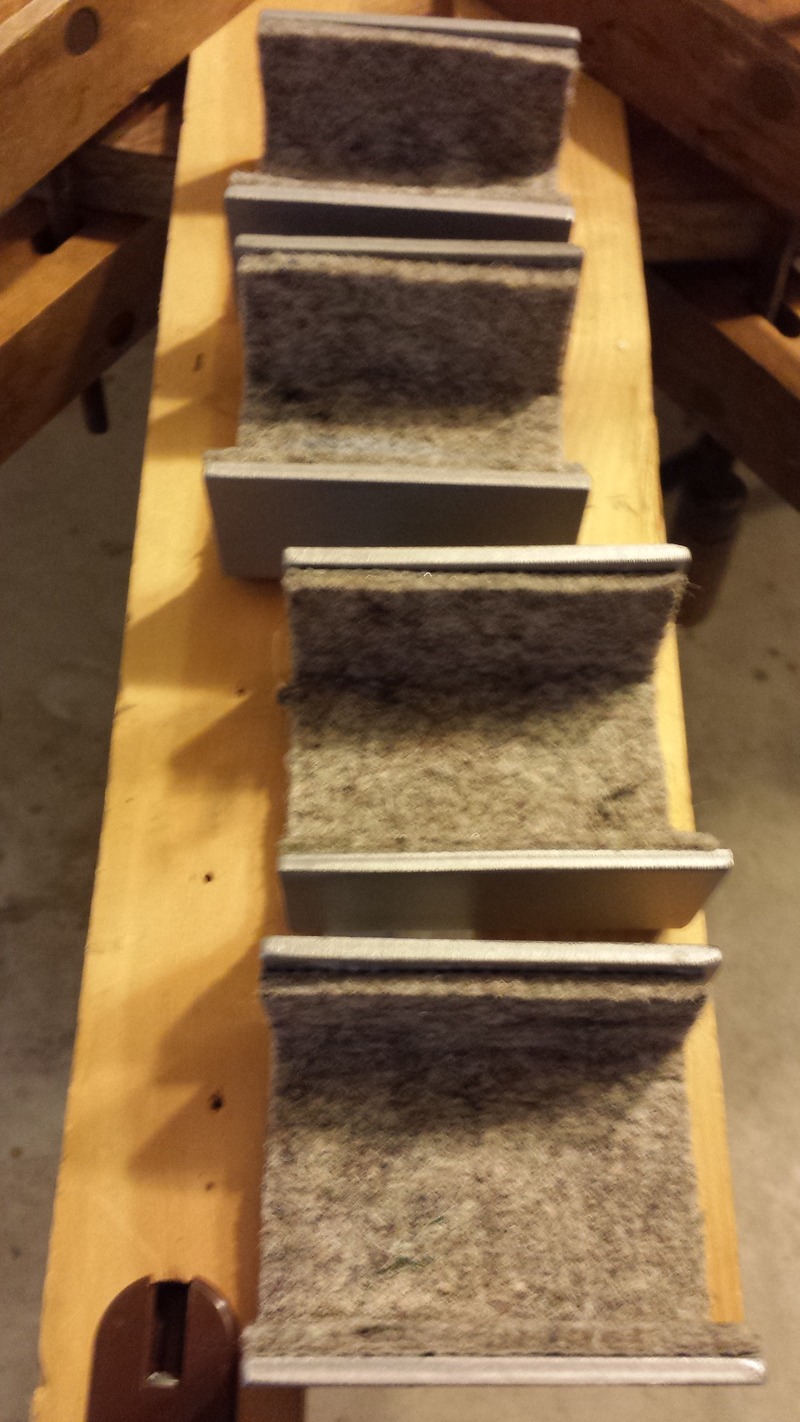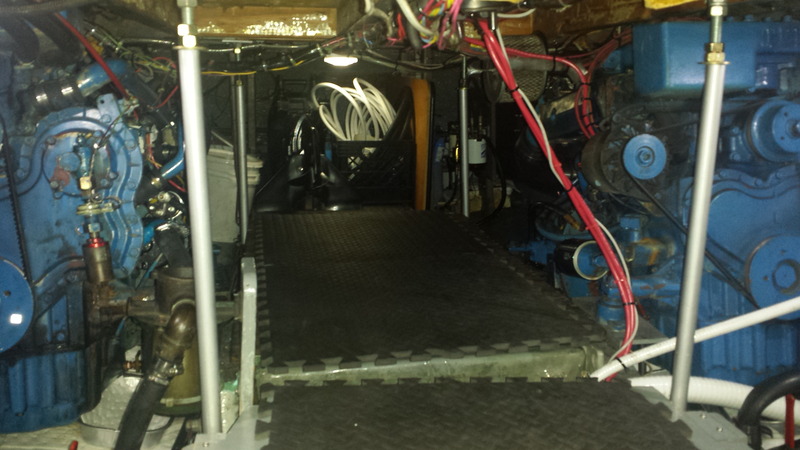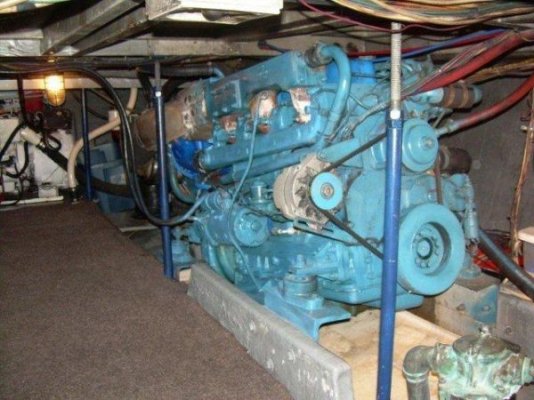- Joined
- Apr 15, 2008
- Messages
- 13,731
- Location
- California Delta
- Vessel Name
- FlyWright
- Vessel Make
- 1977 Marshall Californian 34 LRC
This is a continuation of a conversation we had in the Californian Section several years ago. Here's a link to the previous observations and remedy suggestions.
My 34 Californian LRC has issues with water collecting at the aft house corners and misaligned cabinet doors which I attributed to a sagging deck. The PO had to cut into the aft floor joists to remove the old fuel tanks, then lagged in with new joists in the reassembly process. When I bought the boat, there was a slight, but noticeable, sag causing a misalignment in the the aft cabinet doors. As the years have progressed, so has the sag and the doors were offset by approximately 1/2 to 5/8 inch at the top. The floor creaking and spring had also worsened along with the amount of water collecting at the corners. Something had to be done to resolve these issues.
I studied the construction of my boat and found that the stringers and joists aligned near the corners of my salon engine room hatch. Along the aft edge of the hatch is the area which was replaced by the PO following the tank replacement. I designed some floor jacks based upon Duvie's design illustrated in this post.
I was discussing this project at a gathering of fellow Trawler Forum members last month when Cpseudonym (Craig) offered to fabricate them for me. We got together at the beginning of this month for a morning at the local nautical swap meet and he presented me with the finished product. I took them home and painted them up.

I lined the saddles with rubber backed felt to cushion and silence it.

I mounted them in the ER at the 4 corners of the hatch as seen below. This shot is looking aft from the fwd ER door. The fwd port jack has been adjusted to a more vertical position.

Before extending the jacks, I marked the threaded rod with a red Sharpie to track the amount of lift. Over a week, I lifted the floor from 1 to 1 1/2 inches. My cabinet doors are now properly aligned and while water still collects at the house corners, it's not nearly as much as before. The salon floor is now rock solid with no creaks.
Another problem I was experiencing is that the stbd radiator cap is located directly below a joist. As the floor sagged, the cap became impossible to remove without leveraging the joist up. Now this cap is easily accessed for service.
I have also noticed a difference in the salon sound and vibration levels when cruising. The sound level seems lower with less resonance throughout the cabin. But the floor vibrations have increased due to the rigid connection now in place between the stringers where the engines are mounted and the floor joists.
I can't thank Craig enough for his assistance in making this long-awaited project a reality! Thanks so much, Craig!! You rock, buddy!!
Here's a short video of the supports in place.
My 34 Californian LRC has issues with water collecting at the aft house corners and misaligned cabinet doors which I attributed to a sagging deck. The PO had to cut into the aft floor joists to remove the old fuel tanks, then lagged in with new joists in the reassembly process. When I bought the boat, there was a slight, but noticeable, sag causing a misalignment in the the aft cabinet doors. As the years have progressed, so has the sag and the doors were offset by approximately 1/2 to 5/8 inch at the top. The floor creaking and spring had also worsened along with the amount of water collecting at the corners. Something had to be done to resolve these issues.
I studied the construction of my boat and found that the stringers and joists aligned near the corners of my salon engine room hatch. Along the aft edge of the hatch is the area which was replaced by the PO following the tank replacement. I designed some floor jacks based upon Duvie's design illustrated in this post.
I was discussing this project at a gathering of fellow Trawler Forum members last month when Cpseudonym (Craig) offered to fabricate them for me. We got together at the beginning of this month for a morning at the local nautical swap meet and he presented me with the finished product. I took them home and painted them up.

I lined the saddles with rubber backed felt to cushion and silence it.

I mounted them in the ER at the 4 corners of the hatch as seen below. This shot is looking aft from the fwd ER door. The fwd port jack has been adjusted to a more vertical position.

Before extending the jacks, I marked the threaded rod with a red Sharpie to track the amount of lift. Over a week, I lifted the floor from 1 to 1 1/2 inches. My cabinet doors are now properly aligned and while water still collects at the house corners, it's not nearly as much as before. The salon floor is now rock solid with no creaks.
Another problem I was experiencing is that the stbd radiator cap is located directly below a joist. As the floor sagged, the cap became impossible to remove without leveraging the joist up. Now this cap is easily accessed for service.
I have also noticed a difference in the salon sound and vibration levels when cruising. The sound level seems lower with less resonance throughout the cabin. But the floor vibrations have increased due to the rigid connection now in place between the stringers where the engines are mounted and the floor joists.
I can't thank Craig enough for his assistance in making this long-awaited project a reality! Thanks so much, Craig!! You rock, buddy!!

Here's a short video of the supports in place.
Last edited:


